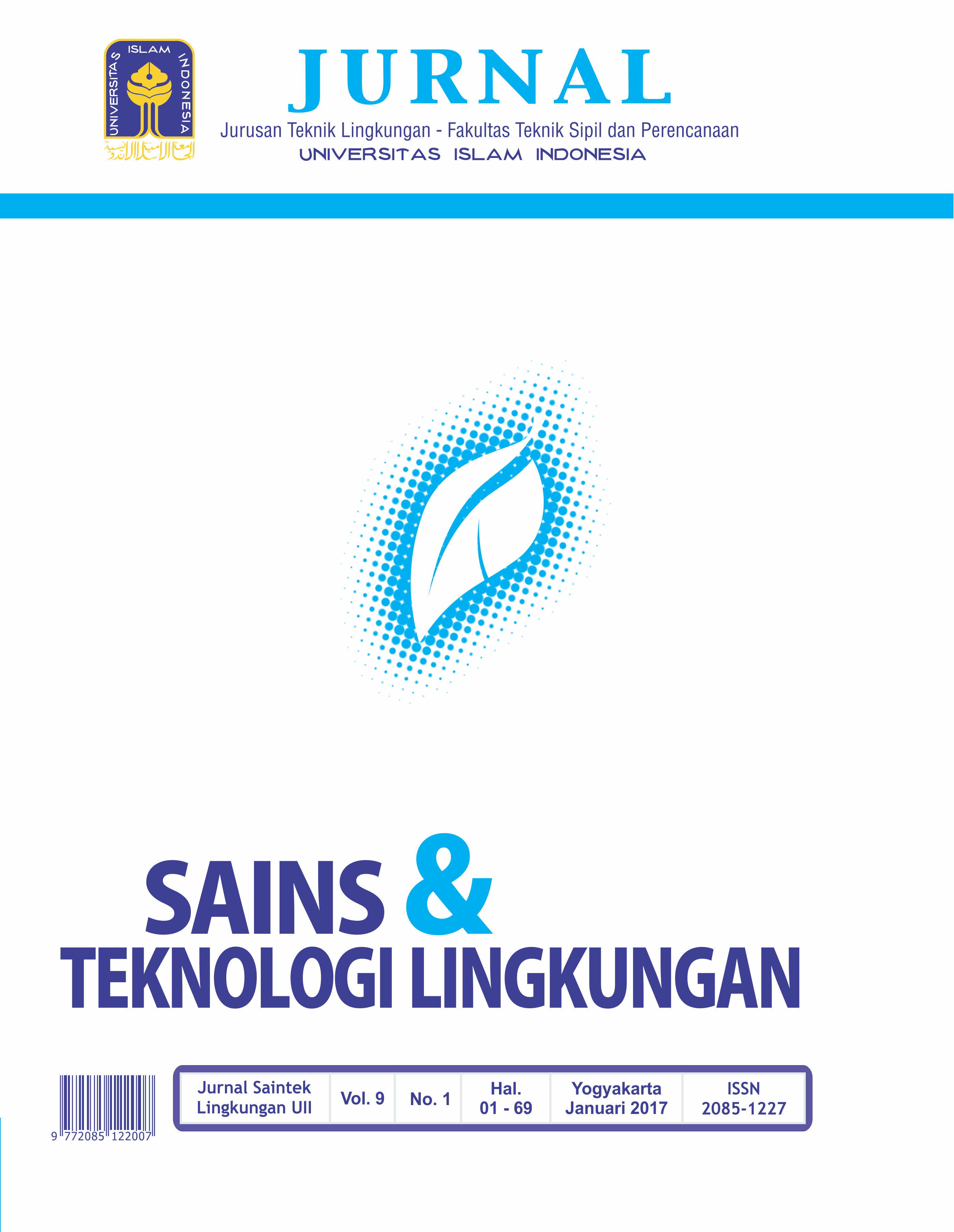Main Article Content
Abstract
Penentuan penambahan volume air konstan pada pengomposan sampah daun dilakukan untuk mendapatkan volume air optimum selama 1 siklus. Penambahan secara manual pada proses pengomposan dapat menyebabkan hambatan proses dekomposisi materi, ketidakpraktisan operasional, dan perubahan parameter kualitas kompos. Tujuan penentuan ini adalah untuk mendapatkan penambahan volume air konstan dalam proses pengomposan sampah daun secara kontinyu hingga mencapai persentase kadar air yang diinginkan. Metode grafis reservoir diterapkan dengan urutan tabulasi hasil dalam satuan persentase kadar air ekuivalen dengan volume air yang ditambahkan dan digambarkan dalam bentuk grafis akumulasi persentase kadar air. Hasil yang didapatkan adalah penambahan volume air konstan dengan kadar air yang diinginkan 50% sebesar 334 ml/kg sampah/siklus ≈ 100 ml/l sampah/siklus ≈ 24% penambahan volume air ≈ 17 ml/hari debit input. Sedangkan penambahan volume air konstan dengan kadar air yang diinginkan 60% sebesar 717 ml/kg sampah/siklus ≈ 215 ml/l sampah/siklus ≈ 16% penambahan volume air ≈ 36 ml/hari debit input. Semakin besar kadar air yang diinginkan, maka semakin besar penambahan volume air konstan dan debit input, serta semakin kecilnya persentase penambahan volume air yang mengindikasikan kapasitas tampung reservoir yang semakin kecil.
Keywords
volume air konstan
pengomposan
sampah daun
grafis reservoir
Article Details
License
Authors who publish with this journal agree to the following terms:
- Authors retain copyright and grant the journal right of first publication with the work simultaneously licensed under a Creative Commons Attribution License that allows others to share the work with an acknowledgement of the work's authorship and initial publication in this journal.
- Authors are able to enter into separate, additional contractual arrangements for the non-exclusive distribution of the journal's published version of the work (e.g., post it to an institutional repository or publish it in a book), with an acknowledgement of its initial publication in this journal.
- Authors are permitted and encouraged to post their work online (e.g., in institutional repositories or on their website) prior to and during the submission process, as it can lead to productive exchanges, as well as earlier and greater citation of published work (See The Effect of Open Access).
